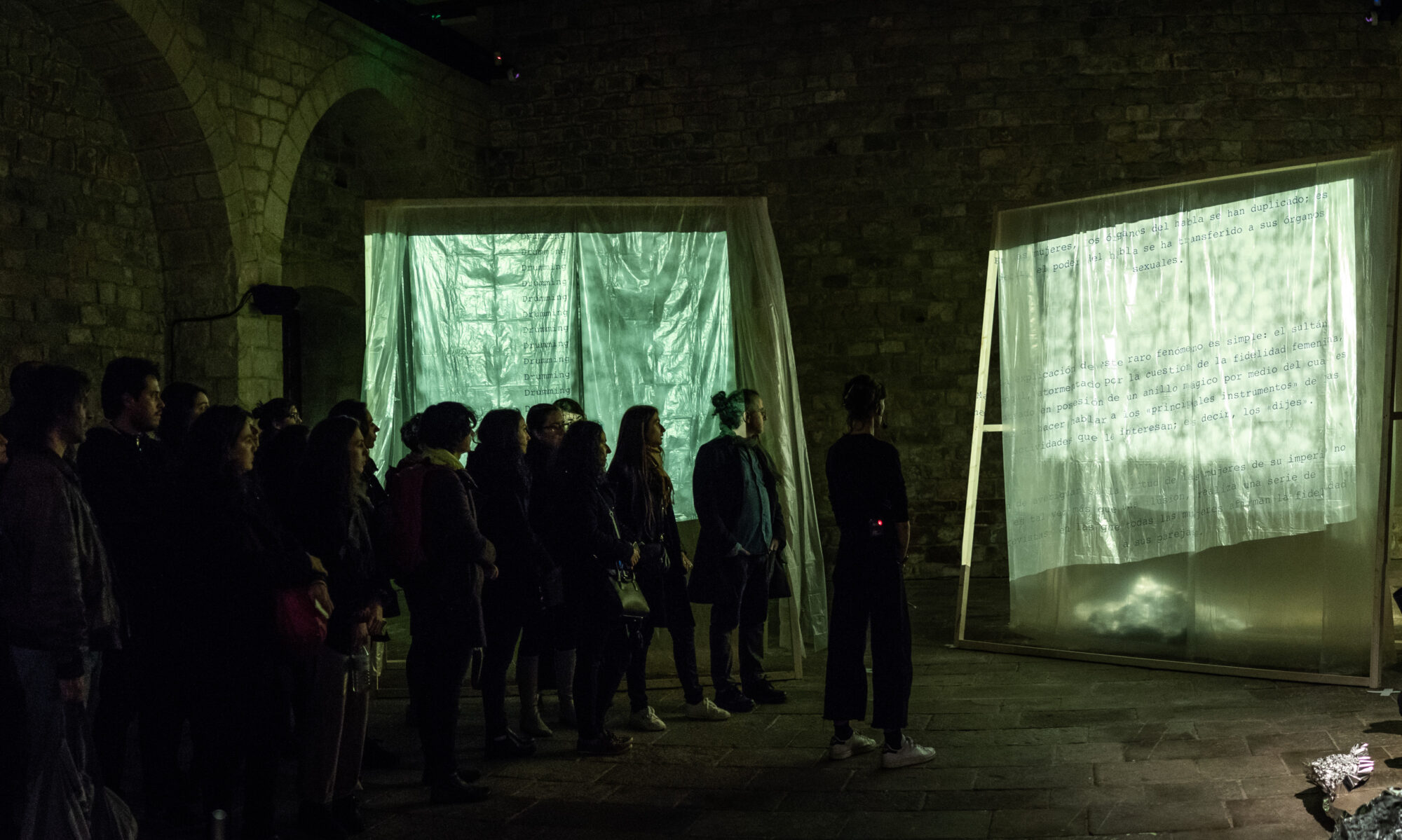«Lectura compartida, lectura comentada, pero también una lectura puesta en escena, lectura performativa en que la comunicación de la forma transmuta la comunicación del fondo, el texto». Joan Casellas
(English text below)
«Aparatos del habla y materialismo histœrico» con la colaboración de Rocío Campaña. Acción en vivo que se sitúa entre los límites del ensayo abierto, el microteatro, la performance, la instalación escultórica, estudiando la idea del play-writing como medio.
Abiertamente exploramos todos esos impulsos e intereses en una suerte de lugar que solo se creó ahí cuando fue el cuerpo el que todo lo atravesó. Todo. El texto, el sonido, las membranas de plástico, la voz en el teléfono, nuestros chistes internos, nuestro drumming.
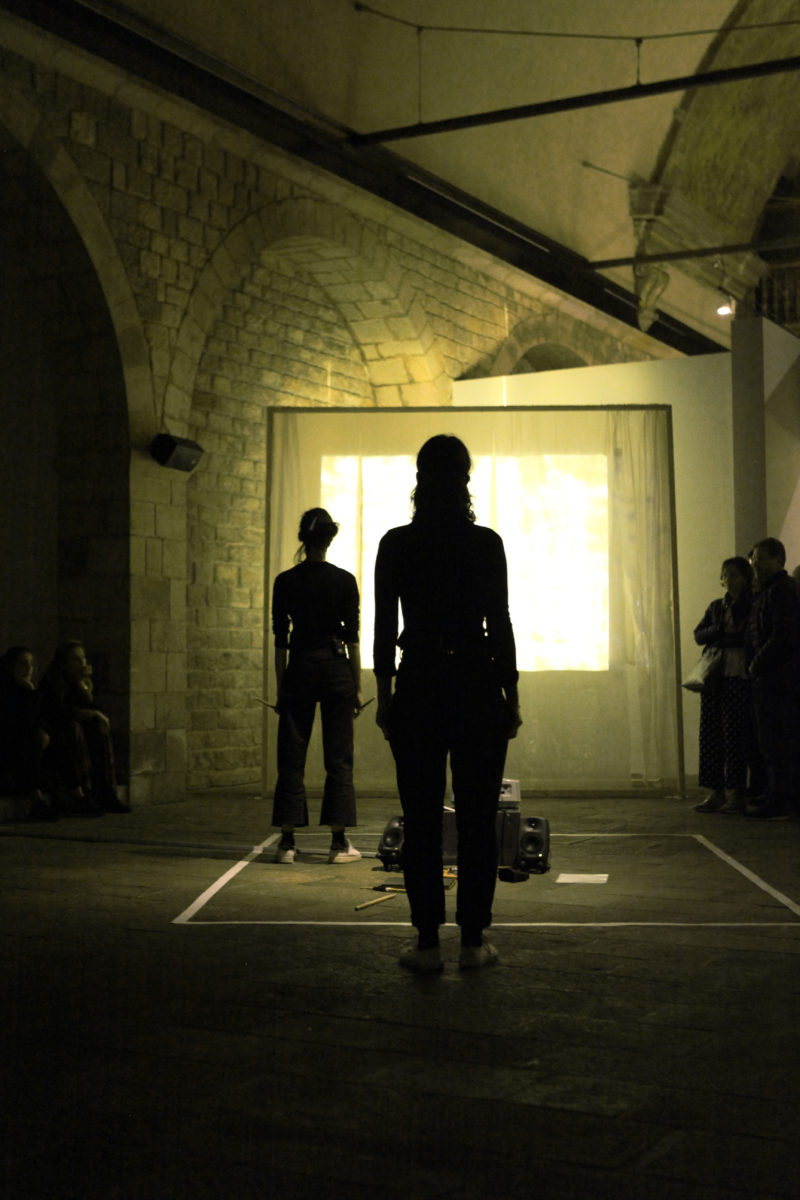

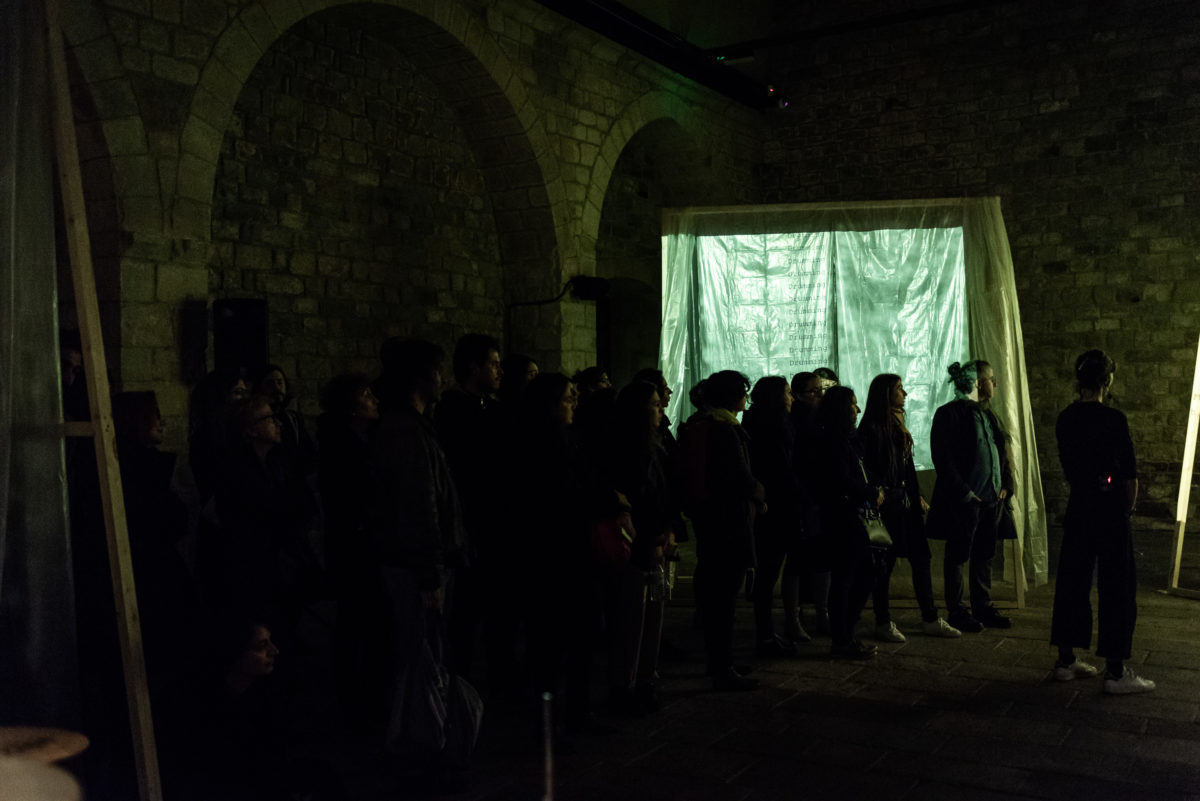
The Reading Room #3 «Aparatos del habla y materialismo histœeerico» (1) / Texto de Joan Casellas.
Lectura compartida o lectura comentada sería la idea que hay detrás de The Reading Room, pero también una lectura puesta en escena, lectura performativa en que la comunicación de la forma transmuta la comunicación del fondo, el texto. Este experimenta una expansión de su sentido, más polidireccional. Es la antigua estrategia de los poetas bardos con sus tonadillas, que, además de hacer que la letra sea inolvidale, consiguen que esta se abra a múltiples sentidos según el sonido y el gesto, según la simple presencia del poeta; en este caso, las poetisas-performers-tamborileras.
Eliana Beltrán dispone sus aparatos sonoros y visuales en el espacio según criterios más performativos que de uso práctico. Arrastrando las baquetas por el suelo para crear una línea de sonido, pero también para hacer hincapié en el pavimento áspero de la sala, caminan de forma extraña, como Esther Ferrer en su acción Andar y hablar sin parar. Usan aquí la estrategia del afilador. (2)
La filántropa Rrose Sélavy (3) dijo que el sonido tiene cualidades escultóricas porque ocupa espacio. Eliana Beltrán emplea ese sentido escultórico del sonido mediante la disposición de un eco que le da su cómplice Rocío Campaña, cara a cara con sus atributos de femme-machina, las baterías, las baquetas, el revestimiento de plástico del tambor.
Las palabras de los textos ocupan el espacio a los cuatro vientos con proyecciones que, a la vez, las comprimen en minúsculos gestos tipográficos y las “reducen” a líneas sobre un color donde esperan ser pronunciadas en voz alta para ocupar definitivamente el espacio de la sala y los cuerpos de quienes la habitamos, pues el sonido nos toca también como una mano invisible…
Eliana habla con entusiasmo de su membrana metálica. En las versiones anteriores, esta constituía un muro entre las dos baterías, pero en la actual se ha caído y deambula por la sala con su murmullo de lata. Es la acusmática caída, una voz cuya procedencia ignoramos, cuya fuente no vemos. La radio sería el gran aparato acusmático que actualiza la estrategia de Pitágoras de hablar a sus discípulos desde detrás de un velo. Los micrófonos inalámbricos tienen algo de acusmático o neoacusmático, ya que prolongan, amplían y a la vez esconden la fuente de la voz. La membrana simboliza a Pitágoras, y en esta tercera versión se ha caído y se arrastra, pero, asimismo, como objeto escultural, se reinventa.
La acción pone en común un extracto del texto “El cuerpo omnisciente”, de Miran Bozovic, (4) con el siguiente reparto: “Pitágoras como la membrana rota / Rocío Campaña como Rocío / Rocío Campaña en la batería como Femme-machina 1 / Eliana Beltrán como Eliana / Eliana Beltrán en la batería como Femme-machina 2 / Miran Bozovic como el filósofo corporizado / Michel Chion como la voz en el teléfono. […] Voz de Bozovic en el cuerpo de Eliana: la primera novela de Diderot se convierte en un serio tratado filosófico sobre la verdadera sede del alma. Presenta una serie de personajes femeninos cuyas almas, en su viaje a través del cuerpo, han acabado por detenerse en sus dijes. Rocío: ¡eufemismo de vagina! Dijes, eufemismo de vagina. Femme-machina 1 y 2: 9 compases de PUNK-ROCK.” Así arranca la acción en The Reading Room. Una crítica a la histeria de la historia hacia la voz de las mujeres como fenómeno acusmático, una voz cuya procedencia ignoramos…
Joan Casellas
Les Escaules, primavera de 2018, con un lazo amarillo
1. Histœrico: fusión de histórico e histérico. Licencia filosófica de la autora.
2. El poema del afilador es corto, práctico y repetitivo, pero su eficacia comunicadora no tiene rival.
3. Normalmente, se atribuye esta frase a Marcel Duchamp, pero como Marcel Duchamp tiene dos identidades, elegimos su identidad femenina para dar voz a este pensamiento. PD: La filantropía de Rrose Sélavy consistía en dar voz a las propuestas más arriesgadas y/o dudosas de Marcel Duchamp.
4. Capítulo del libro Lacan y los interlocutores mudos, de Slavoj Zizek.
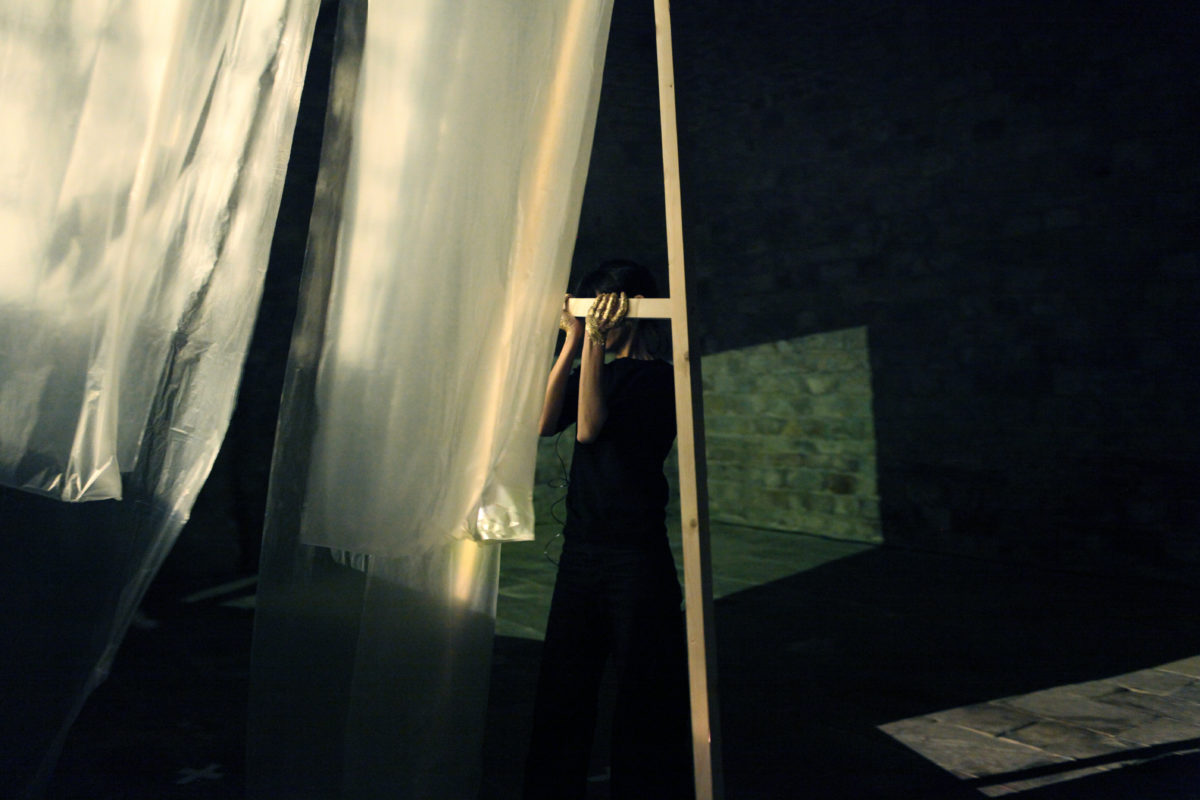

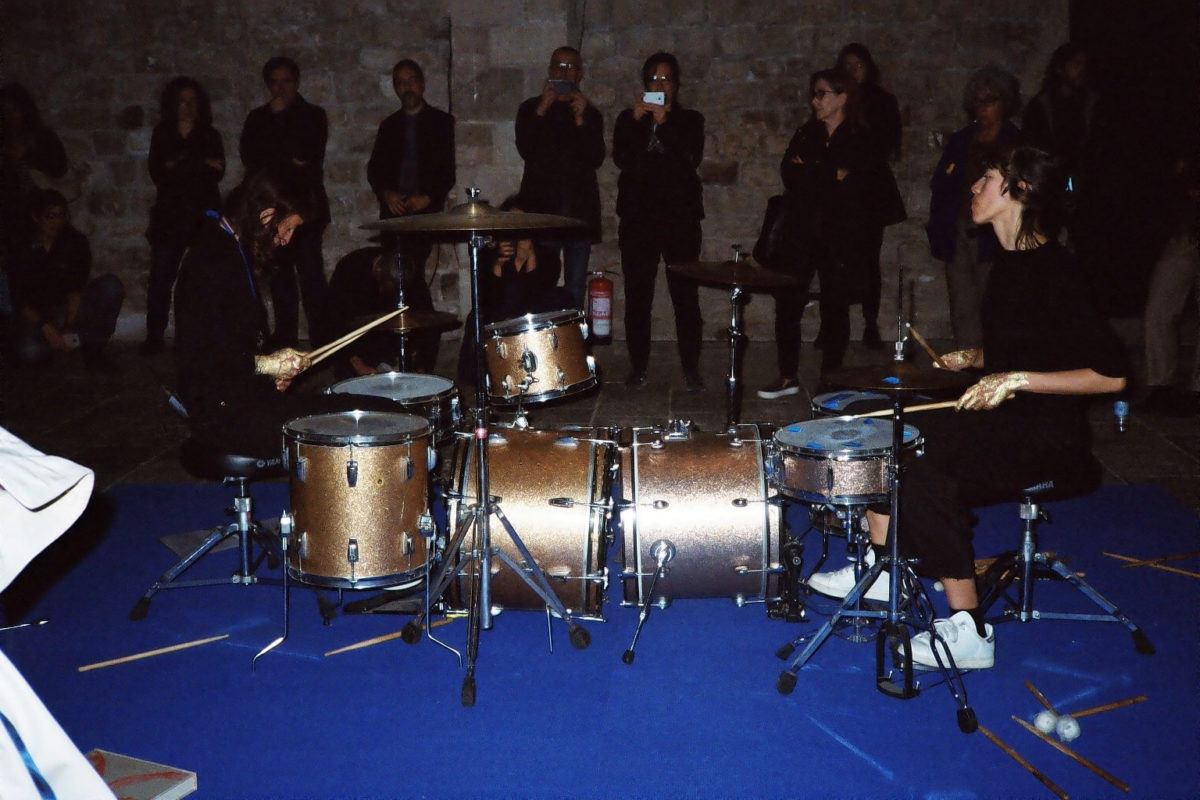
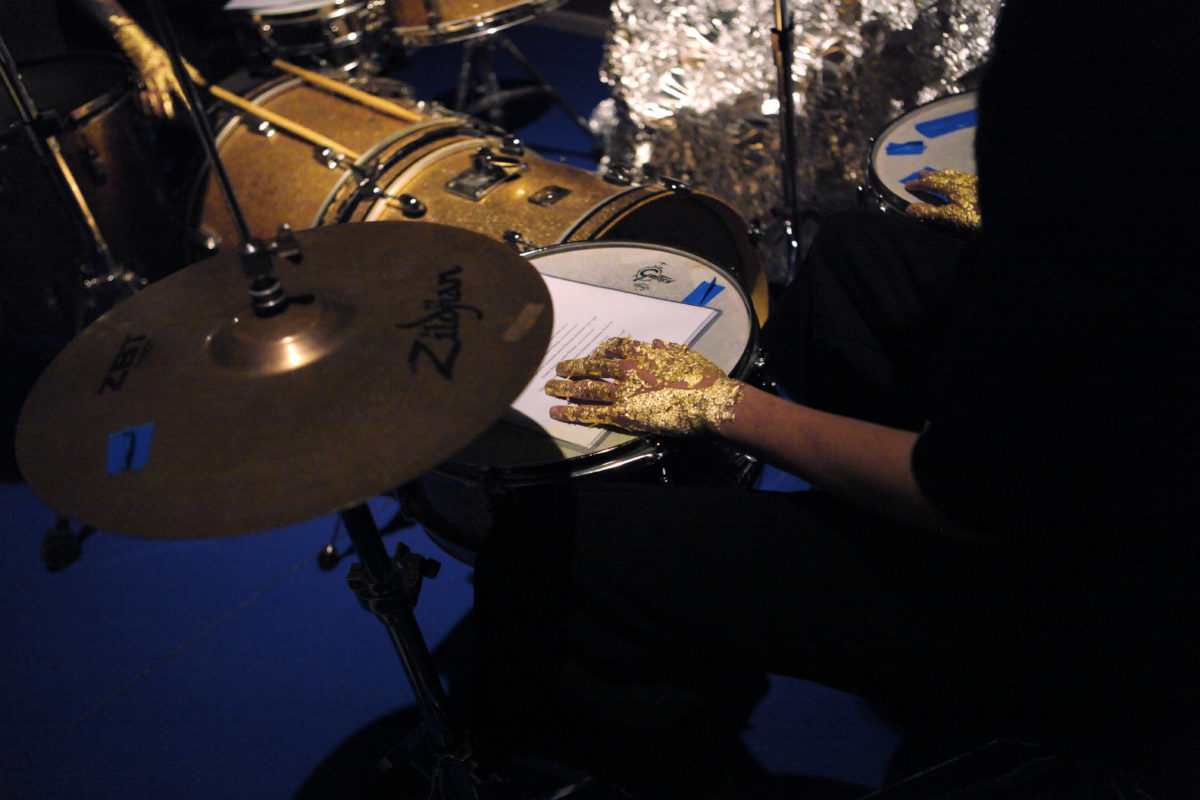


**********************************************************************
THE READING ROOM #3 : «Speech apparatus and hysteeoorical materialism» (1) Eliana Beltrán With the collaboration of Rocío Campaña. version 2018.
Shared reading or commented reading is the idea behind The Reading Room, and so too is staged reading, a performative reading where the communication of the form transforms the communication of the content, the text. The latter undergoes an expansion of its meaning, rendering it more polydirectional. It is the old strategy of bards with their popular musical skits, which, besides making the lyrics unforgettable, manage to imbue them with multiple meanings depending not only on the sounds and gestures, but also on the mere presence of the poet; in this case, the poets-performers-drummers.
Eliana Beltrán arranges her audio and visual apparatus in space according to criteria of performance rather than practical use. Dragging the drumsticks on the floor to create a line of sound and also to emphasise the rough flooring of the room, they walk in a strange way, like Esther Ferrer in her action entitled Andar y hablar sin parar. Here they use the sharpener strategy. (2)
The philanthropist Rrose Sélavy (3) said that sound has sculptural qualities because it occupies space. Eliana Beltrán employs this sculptural sense of sound by arranging for her partner Rocío Campaña to echo her, face to face with her femme-machina attributes, the drums, the drumsticks, the plastic covering of the drum.
The words of the texts occupy the space in every direction, with projections that simultaneously compress them into miniscule typographical gestures and “shrink” them to lines on a colour where they wait to be spoken out loud in order to ultimately occupy the space of the room and the bodies of those within it, since the sound also touches us as if it were an invisible hand…
Eliana talks enthusiastically about her metal membrane. In earlier versions, it formed a wall between the two sets of drums, but in the current version it has fallen down and wanders around the rooms with its tinny murmuring. It is the fallen acousmatic, a voice whose provenance we are unaware of, whose source we cannot see. The radio is the acousmatic apparatus par excellence, a modern-day version of Pythagoras’s strategy of talking to his students from behind a veil. There is something acousmatic or neo-acousmatic about cordless microphones because they extend, amplify and, at the same time, hide the source of the voice. The membrane symbolises Pythagoras and, in this third version, it has fallen down and is dragged about, but, as a sculptural object, it also reinvents itself.
The action pools an excerpt of Miran Bozovic’s “The Omniscient Body” text, (4) with the following cast: “Pythagoras as the broken membrane / Rocío Campaña as Rocío / Rocío Campaña on drums as Femme-machina 1 / Eliana Beltrán as Eliana / Eliana Beltrán on drums as Femme-machina 2 / Miran Bozovic as the embodied philosopher / Michel Chion as the voice on the telephone. […] Bozovic’s voice in Eliana’s body: Diderot’s first novel becomes a serious philosophical treatise about the true seat of the soul. It presents a series of female characters whose souls, on their journey through the body, have ended up stopping at its charms. Rocío: A euphemism for ‘vagina’! Charms, a euphemism for ‘vagina’! Femme-machina 1 and 2: 9 bars of PUNK-ROCK.” That is how the action kicks off in The Reading Room. A hysterical critique of the history of women’s voices as an acousmatic phenomenon, a voice whose provenance we are unaware of…
Joan Casellas.
Les Escaules, Spring 2018, with a yellow ribbon.
1. Histœrico: A fusion of the Spanish adjectives histórico and histérico (historical and hysterical). Philosophical licence of the author.
2. The sharpener poem is short, practical and repetitive, but its communicative effectiveness is second to none.
3. Marcel Duchamp is usually credited with this phrase, but since Marcel Duchamp has two identities, we have chosen his female identity to give voice to this thought. PS. Rrose Sélavy’s philanthropy involved giving voice to Marcel Duchamp’s most daring and/or dubious proposals.
4. A chapter from the book entitled Lacan: The Silent Partners, edited by Slavoj Žižek.
